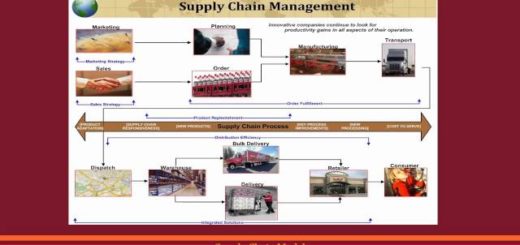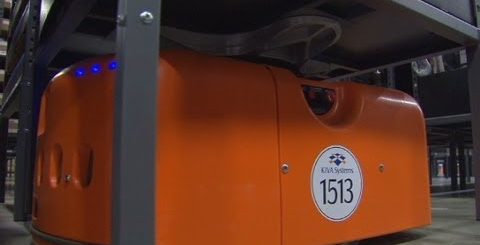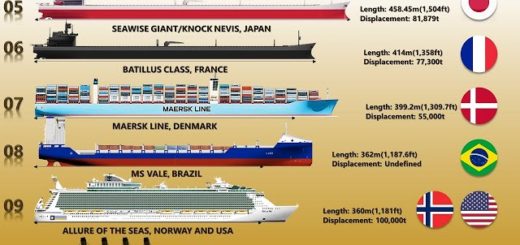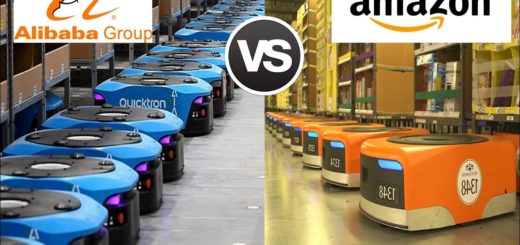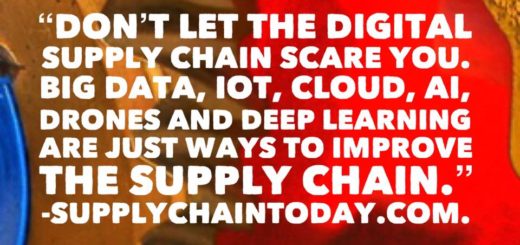Supply Chain Visibility and Traceability
Introduction
“Unlock the Power of Supply Chain Visibility and Traceability – See the Big Picture!” Supply chain visibility and traceability are two of the most important concepts in the modern supply chain. They are essential for companies to ensure that their products are delivered on time, in the right quantity, and with the right quality. Visibility and traceability allow companies to monitor their supply chain from end-to-end, ensuring that all components are accounted for and that any issues can be quickly identified and addressed. By leveraging technology such as RFID tags, GPS tracking, and blockchain, companies can gain real-time insights into their supply chain and ensure that their products are delivered on time and with the highest quality.
How to Leverage Supply Chain Visibility and Traceability to Improve Efficiency
Supply chain visibility and traceability are two of the most important components of a successful supply chain. By leveraging these two elements, businesses can improve their efficiency and reduce costs.
Supply chain visibility is the ability to track and monitor the movement of goods and services throughout the supply chain. This includes tracking the origin of the goods, the route they take, and the destination. With visibility, businesses can identify potential problems and take corrective action before they become costly.
Traceability is the ability to trace the origin of a product or service. This includes tracking the source of raw materials, the production process, and the distribution of the finished product. Traceability allows businesses to identify any issues with the product or service and take corrective action quickly.
By leveraging supply chain visibility and traceability, businesses can improve their efficiency and reduce costs. Visibility allows businesses to identify potential problems and take corrective action before they become costly. Traceability allows businesses to identify any issues with the product or service and take corrective action quickly.
In addition, businesses can use supply chain visibility and traceability to improve customer service. By tracking the movement of goods and services, businesses can provide customers with accurate information about their orders. This can help to reduce customer complaints and improve customer satisfaction.
Finally, businesses can use supply chain visibility and traceability to improve their supply chain security. By tracking the movement of goods and services, businesses can identify any potential security risks and take corrective action. This can help to reduce the risk of theft or fraud and ensure that the supply chain is secure.
By leveraging supply chain visibility and traceability, businesses can improve their efficiency and reduce costs. This can help businesses to remain competitive in today’s market and ensure that their customers receive the best possible service.
The Benefits of Automating Supply Chain Visibility and Traceability
Supply chain visibility and traceability are essential components of any successful business. Automating these processes can provide numerous benefits to companies, including improved efficiency, cost savings, and enhanced customer satisfaction.
Improved Efficiency
Automating supply chain visibility and traceability can help streamline operations and reduce manual labor. By automating the process, companies can quickly and accurately track the movement of goods and materials throughout the supply chain. This can help reduce the time and resources needed to manage the supply chain, resulting in improved efficiency.
Cost Savings
Automating supply chain visibility and traceability can also help reduce costs. By eliminating manual processes, companies can save on labor costs and reduce the risk of errors. Automation can also help reduce the need for additional storage space, as goods and materials can be tracked in real-time. This can help companies save on storage costs and optimize their inventory management.
Enhanced Customer Satisfaction
Automating supply chain visibility and traceability can also help improve customer satisfaction. By providing customers with real-time updates on the status of their orders, companies can ensure that orders are delivered on time and in full. This can help build customer loyalty and trust, resulting in increased sales and revenue.
Overall, automating supply chain visibility and traceability can provide numerous benefits to companies. By streamlining operations, reducing costs, and improving customer satisfaction, companies can gain a competitive edge in the marketplace. Automation can also help companies ensure that their supply chain is running smoothly and efficiently, resulting in improved profitability.
The Role of Blockchain in Enhancing Supply Chain Visibility and Traceability
Blockchain technology has the potential to revolutionize the way supply chains are managed. By providing a secure, distributed ledger, blockchain can enable greater visibility and traceability throughout the supply chain. This can help to reduce costs, improve efficiency, and increase customer satisfaction.
At its core, blockchain is a distributed ledger technology that records and stores data in a secure, immutable manner. This means that all transactions are recorded and stored in a secure, tamper-proof manner. This makes it ideal for tracking the movement of goods throughout the supply chain. By recording each transaction on the blockchain, companies can gain a comprehensive view of the entire supply chain, from the source of the goods to the end customer.
Blockchain can also be used to track the provenance of goods. By recording the origin of goods on the blockchain, companies can ensure that they are sourcing from legitimate suppliers. This can help to reduce the risk of counterfeiting and other fraudulent activities. Additionally, blockchain can be used to track the quality of goods throughout the supply chain. By recording quality control data on the blockchain, companies can ensure that their products meet the highest standards.
Finally, blockchain can be used to improve customer service. By providing customers with access to the blockchain, they can easily track the progress of their orders. This can help to reduce customer inquiries and improve customer satisfaction.
In summary, blockchain technology has the potential to revolutionize the way supply chains are managed. By providing a secure, distributed ledger, blockchain can enable greater visibility and traceability throughout the supply chain. This can help to reduce costs, improve efficiency, and increase customer satisfaction.
The Impact of AI and Machine Learning on Supply Chain Visibility and Traceability
The advent of artificial intelligence (AI) and machine learning (ML) has revolutionized the way businesses operate. AI and ML have enabled businesses to gain greater visibility and traceability into their supply chains, allowing them to better manage their operations and reduce costs.
AI and ML can be used to automate the process of tracking and tracing goods throughout the supply chain. By leveraging AI and ML, businesses can gain real-time insights into the location and status of their goods, allowing them to quickly identify and address any issues that may arise. This improved visibility and traceability can help businesses reduce the risk of delays, improve customer service, and reduce costs associated with lost or damaged goods.
AI and ML can also be used to analyze large amounts of data to identify patterns and trends in the supply chain. This can help businesses identify potential problems before they occur, allowing them to take proactive steps to address them. AI and ML can also be used to optimize the supply chain, helping businesses reduce costs and improve efficiency.
In addition, AI and ML can be used to automate the process of forecasting demand and supply. By leveraging AI and ML, businesses can accurately predict future demand and supply, allowing them to better manage their inventory and reduce costs associated with overstocking or understocking.
Overall, AI and ML have had a significant impact on supply chain visibility and traceability. By leveraging AI and ML, businesses can gain real-time insights into their supply chains, identify potential problems before they occur, optimize their supply chains, and accurately forecast demand and supply. This improved visibility and traceability can help businesses reduce costs, improve customer service, and better manage their operations.
The Challenges of Implementing Supply Chain Visibility and Traceability
Supply chain visibility and traceability are two of the most important components of a successful supply chain. However, implementing these two components can be a challenge for many organizations.
The first challenge of implementing supply chain visibility and traceability is the cost. Implementing a system that provides visibility and traceability requires significant investments in technology, personnel, and training. Organizations must also consider the cost of maintaining the system over time.
The second challenge is the complexity of the supply chain. Many organizations have complex supply chains that span multiple countries and involve multiple suppliers. This complexity can make it difficult to track and trace products throughout the supply chain.
The third challenge is the lack of standardization. Different organizations use different systems and processes to track and trace products. This lack of standardization can make it difficult to integrate different systems and processes into a single system.
The fourth challenge is the lack of data. Many organizations lack the data needed to accurately track and trace products throughout the supply chain. Without accurate data, it is difficult to gain visibility and traceability.
Finally, the fifth challenge is the lack of collaboration. Many organizations lack the collaboration needed to effectively implement supply chain visibility and traceability. Without collaboration, it is difficult to ensure that all stakeholders are working together to achieve the desired results.
Overall, implementing supply chain visibility and traceability can be a challenge for many organizations. However, with the right investments in technology, personnel, and training, organizations can overcome these challenges and achieve the desired results.
The Future of Supply Chain Visibility and Traceability: What to Expect
The future of supply chain visibility and traceability is an exciting one. With the rise of digital technologies, companies are now able to gain unprecedented insight into their supply chains. This increased visibility and traceability can help companies reduce costs, improve efficiency, and increase customer satisfaction.
In the near future, companies will be able to leverage the power of the Internet of Things (IoT) to gain real-time visibility into their supply chains. IoT-enabled sensors and devices will be able to track and monitor the movement of goods throughout the supply chain, providing companies with up-to-date information on the location and condition of their products. This will enable companies to quickly identify and address any issues that may arise, such as delays or product defects.
In addition, companies will be able to use blockchain technology to create secure, immutable records of their supply chain activities. This will allow companies to track the origin and movement of goods, as well as any changes that have been made to them. This will help companies ensure that their products are safe and compliant with industry regulations.
Finally, companies will be able to use artificial intelligence (AI) and machine learning to analyze their supply chain data and identify patterns and trends. This will enable companies to make more informed decisions about their supply chain operations and better anticipate customer needs.
Overall, the future of supply chain visibility and traceability is a bright one. With the help of digital technologies, companies will be able to gain unprecedented insight into their supply chains, allowing them to reduce costs, improve efficiency, and increase customer satisfaction.
Conclusion
Supply chain visibility and traceability are essential components of a successful supply chain. They enable companies to monitor and control their supply chain operations, reduce costs, and improve customer service. By providing visibility and traceability, companies can ensure that their supply chain is running efficiently and effectively. Additionally, they can identify and address any potential issues quickly and effectively. Ultimately, supply chain visibility and traceability are key to the success of any business.
SCM Resources for Visibility and Traceability
- Blockchain Expert Explains One Concept in 5 Levels of Difficulty.
- Blockchain for Supply Chain Transparency.
- Implementation Guide to Develop a Resilient Supply Chain.
- Journey of Coffee – Blockchain Supply Chain Process.
- Supply Chain Today
- The Way We Work: Blockchain in the Supply Chain.
- Yellow: Inside American Trucking’s Largest Bankruptcy.
- Why use Blockchain in supply chain?



